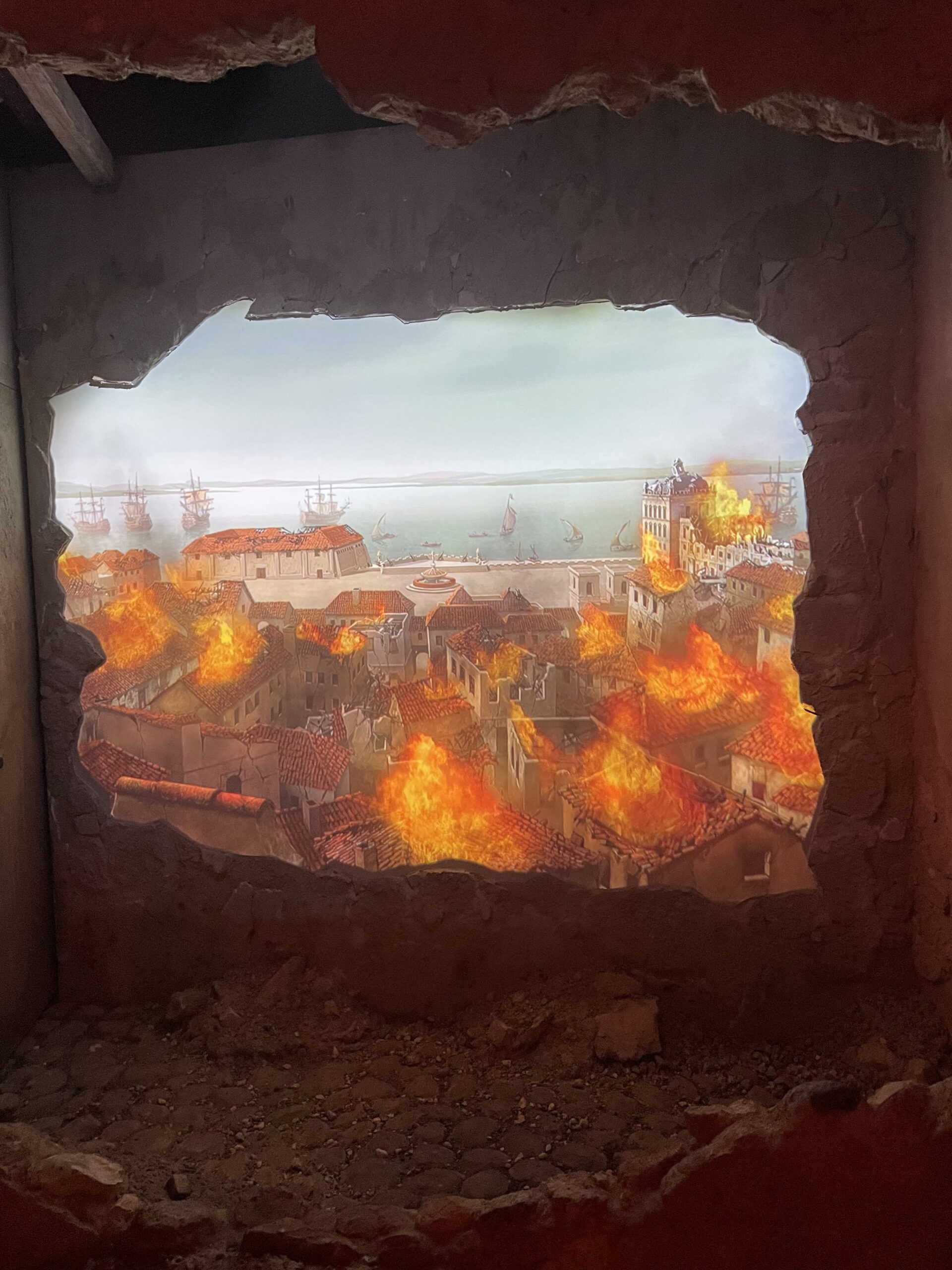
Lisbon, Portugal- Quake Earthquake Museum
Olá!
For the past 4 days, I have been in Lisbon, Portugal for a short study tour with my Disaster Management Leadership class. It was very nice to escape the cold weather in Copenhagen just for a few days and to soak in some sun. When I first arrived in Lisbon, I found it surprising and a bit funny how everyone wandering on the streets were wearing puffer jackets as my classmates and I were wearing shorts and t-shirts. It was a great experience and I enjoyed lots of authentic Portuguese dishes during my short stay. One of my favorite experiences during this trip was our visit to the Quake Lisbon Earthquake Center. We learned lots about the famous great 1755 Lisbon earthquake and how earthquakes work. This museum experience was extremely informative and interesting for me. From living in Costa Rica and San Francisco, I have experienced a lot of earth tremors in my lifetime.
Right after the 1755 earthquake in Lisbon, the survivors wandered the streets covered in blood and dust, trying to navigate through the rubble. Men, women, and children cried desperately while looking for family and friends. After the tsunami, people fled to the upper parts of the city. They built tents in gardens and farms, even on the grounds of the Palace of Belem, where the royal family had taken refuge. The fire burned for days. Some thieves took advantage of the confusion and many were severely punished for their crimes. At around 11.00 am, Lisbon was hit by a tsunami. The water rose and turned into a wave reaching about five meters high, causing panic in the lower part of the city. Several waves followed, in a flux and reflux of water that destroyed everything in its path, dragging people away and crushing boats and piers against buildings. It is estimated that there were around 900 victims caused by the tsunami, which penetrated about 250 meters inland.
Tectonic plates are enormous slabs of solid rock.Their sizes and thickness vary greatly. Tectonic plates are made of Earth’s lithosphere, which comprises the crust and the underlying uppermost mantle The composition of the plates varies according to whether they are continental (lightweight materials), or oceanic (heavy materials). The continental crust and lithosphere are also much thicker than the oceanic. Earthquakes occur due to the relative motion between tectonic plates. This movement slowly builds up stress that eventually is released. When the rocks reach their limit, they break along a fracture plane-also called a fault. This sudden fracture of the rocks is what we call an earthquake. The magnitude of the earthquake is related to the energy released as seismic waves when the fault breaks. The amount of seismic energy released during an earthquake is related to several factors: the size of the ruptured area on the fault plane, the amount of “slip”, or how much one block moved in relation to the other, or the geological properties of the rock, which dictate the amount of energy stored during elastic deformation.
Did you know that Scientists cannot yet predict the location of all future earthquakes, partly because it is impossible to map all existing active faults? The erosion and deposit of sediments shape the landscape, erasing the traces of active faults, where future earthquakes may occur. This makes the mapping of active faults a very challenging task. This is why it is important to have the right protocols to follow and stay safe during an earthquake.
If we want to prevent avoidable damage and injuries during an earthquake, we need to be prepared. To do so, it is essential to draw up an emergency plan, with the help of family and friends:
• Designate a meeting point outside your home and build a two to three days emergency survival kit.
• Prepare your house by avoiding clutter and securing shelves to the walls.
• Decide together what spots are safest in your home: in the corners of load-bearing walls and under sturdy tables or desks.
• Make sure everyone knows what areas to avoid and how to turn off the utilities.
• Most importantly, when an earthquake hits, don’t panic. Find shelter as fast as you can and wait until the shaking stops.
Nowadays, there are many buildings that are designed to remain standing even during an earthquake. Hospitals and other critical facilities are subject to stricter regulations and must also remain safe and serviceable in all circumstances. From a seismic resistance viewpoint, a building is designed according to many factors, including the type of ground it is built on, its height, and the materials used. Every building has a dominant resonance period. The resonance period is the time a building will take to naturally complete a cycle of back-and-forth motion. The taller the building, the longer the resonance period will be and the slower the building will swing. Short buildings will resonate at a faster rhythm than tall buildings.
Overall, my experience in Lisbon was amazing. I have been to Portugal several times in my past, but it never fails me how beautiful the architecture and culture is every time I visit. I would recommend everyone to visit Portugal if they ever get the opportunity to do so!

